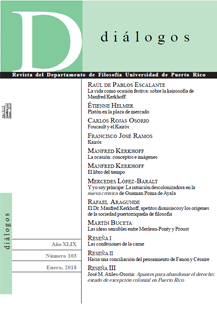Abstract
The rarity of the concept of consciousness in the philosophy of Spinoza invites one to inquire about its stature and place within the system. Far from being a given, primary and immediate, consciousness is secondary and it is necessary to account for its appearance. This article analyzes, then, Spinoza‘s inversion of consciousness as a principle to the principle of consciousness. In the first place, the article wishes to elucidate its genesis and its productive causes. The objective is to show that even though consciousness is a secondary phenomenon, this doesn‘t imply that it is of secondary importance. Consciousness plays a decisive role for salvation as revealed by its different figures that spread out between the quasiunconsciousness of the ignorant to the wise, conscious of himself, of all things and God. The degree of consciousness allows us to measure our own perfection and that of others and in this way constitute, besides, a principle of distinction between men and between men and animals.Downloads
Download data is not yet available.

